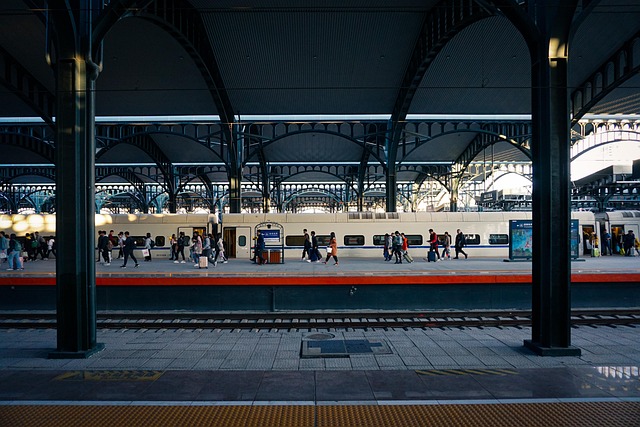Accessible Stadium Design for All Spectators
Accessible stadium design makes venues usable, safe, and engaging for people of all abilities. This article outlines practical design strategies, digital and operational measures, and partnership approaches that support inclusive experiences for spectators, staff, and community members.

Inclusive stadium design ensures that everyone who attends an event — regardless of mobility, sensory, or cognitive needs — can participate with dignity and independence. Thoughtful layouts, clear communications, and flexible services reduce barriers and improve the overall experience for fans, staff, and families. Beyond compliance, accessibility is an operational priority that intersects with ticketing, scheduling, digital platforms, sustainability, and community outreach. This article examines concrete design principles and operational practices that venues can adopt to create welcoming environments and sustained fan engagement while balancing practical constraints such as circulation flow, sightlines, and emergency procedures.
How does accessibility shape stadium design?
Accessibility in stadium design begins with physical circulation and sightlines: pathways, ramps, elevators, and seating locations that provide comparable views and social experiences. Wayfinding and signage using plain language, high-contrast visuals, and tactile or audible cues help visitors with visual or cognitive impairments navigate independently. Accessible restrooms, concession points, and companion seating are operational priorities; spacing for mobility devices and transfer-access seating improves comfort for users. Inclusive design also anticipates sensory needs — quiet rooms, low-sensory zones, and predictable acoustics — and integrates universal design principles that benefit all attendees, including families with young children and older adults.
What are ticketing and scheduling considerations?
Ticketing systems should present clear accessibility options during purchase, including accessible seating maps, companion seat selection, and service animal or assistive device accommodations. Seasonpass and membership offerings can include reserved accessible allocations and flexible exchange policies to account for changing needs. Scheduling practices influence access too: staggered entry times, priority entry lanes, and timed seating reduce crowding and support safe arrivals. Communications about scheduling, lineup changes, or transport disruptions must be accessible across channels — plain-text alerts, captioned announcements, and alternative formats on demand.
How can digital platforms improve fan engagement?
Digitalplatforms play a key role in delivering inclusive experiences. Accessible websites and apps that follow recognized accessibility standards allow ticket purchases, venue maps, and service requests to be completed independently. Features such as live captioning, multiple-language support, descriptive audio, and chat-based assistance expand engagement. Digital tools can surface information about accessible parking, routes, and amenities, and integrate scheduling features for timed arrivals or transit coordination. When digital solutions are coupled with on-site staff trained in accessible communications, fanengagement improves across diverse audience segments.
What sustainability and operational factors matter?
Sustainability and accessibility can be mutually reinforcing. Materials and layouts that reduce maintenance and improve slip resistance create safer walking surfaces. Energy-efficient lighting that minimizes glare and provides consistent illumination supports visibility for all users. Operationally, staff training in inclusive practices, accessible emergency evacuation procedures, and maintenance plans for elevators and assistive features are essential. Sustainability planning should also consider social sustainability — ensuring that ticket pricing structures, transportation access, and community programs support equitable attendance opportunities.
How does youth outreach and partnerships support inclusivity?
Youthoutreach and partnerships with local disability organizations, schools, and community groups help venues understand diverse needs and co-create programming. Outreach can include sensory-friendly events, education programs that introduce stadium navigation, and youth volunteer opportunities that build inclusive cultures. Partnerships with transport providers and community services improve accessibility to and from the venue. Communications teams can maintain ongoing dialogues with advocacy groups to solicit feedback and iterate on accessibility improvements, ensuring inclusivity remains an operational priority rather than a one-time project.
| Provider Name | Services Offered | Key Features/Benefits |
|---|---|---|
| Populous | Stadium and sports venue architecture | Experience designing arenas and integrating accessibility in seating, circulation, and sightlines |
| HOK | Architecture and planning, sports facilities | Multidisciplinary design with attention to inclusive layouts and operational workflows |
| Ticketmaster | Ticketing platform and venue solutions | Accessible seating maps, reserved allocations, and support for assistive services |
| AXS | Ticketing and access control | Digital ticketing, timed entry features, and integrations for venue operations |
| Eventbrite | Event ticketing platform | Simple ticketing flows and accessibility options for smaller events and community programs |
| Level Access | Digital accessibility consulting | Audits, remediation guidance, and training for accessible websites and apps |
| Deque Systems | Digital accessibility tools and testing | Automated and manual testing solutions to improve app and website accessibility |
Conclusion
Accessible stadium design combines physical design, digital platforms, operational practices, and community partnerships to provide equitable experiences. By prioritizing clear communications, inclusive ticketing and scheduling, staff training, and ongoing engagement with advocacy groups, venues can reduce barriers and foster lasting fanengagement. Sustainability planning, youth outreach, and collaboration with specialist providers support practical implementation and continuous improvement, helping stadiums serve diverse communities effectively.





